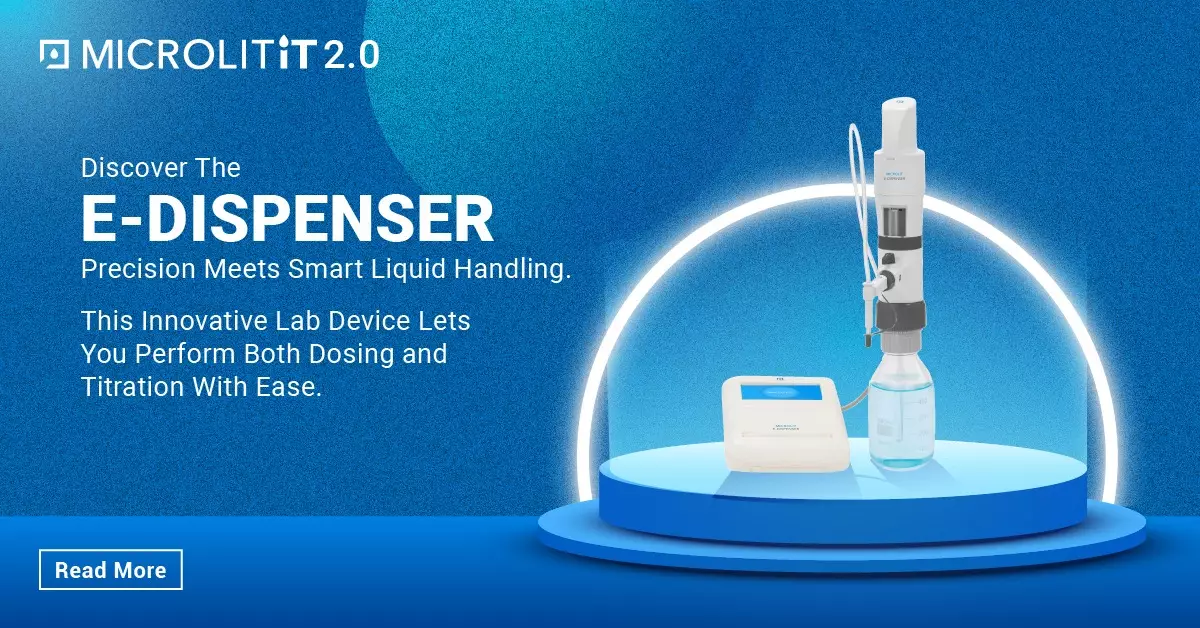Essential Facts About Pipette Calibration Standard ISO 8655:2022
- June 10, 2024
- ENQUIRE NOW

In the precise world of laboratory science, the accuracy and reliability of measurements are paramount. One of the most common tools for liquid handling is the pipette and ensuring its accuracy requires strict adherence to calibration standards. The International Organization for Standardization (ISO) has established such a guideline with the ISO 8655:2022 standard. This blog delves into the essential facts about the ISO 8655:2022 standard, highlighting its significance, updates from previous versions and key considerations for compliance.
Understanding ISO 8655:2022
ISO 8655:2022 is an international standard that specifies the requirements and testing methods for the calibration of piston-operated volumetric apparatus, including single-channel and multi-channel pipettes, burettes, dilutors, dispensers, and syringes. This standard aims to ensure that these devices provide accurate and precise volume measurements, which are critical for reliable laboratory results.
Key Updates in ISO 8655:2022
 The 2022 update of ISO 8655 introduces several significant changes and improvements over its predecessor, ISO 8655:2002. Here are some of the key updates:
The 2022 update of ISO 8655 introduces several significant changes and improvements over its predecessor, ISO 8655:2002. Here are some of the key updates:
Expanded Scope: ISO 8655:2022 now includes more types of piston-operated devices, reflecting the diversity and advancements in liquid handling technologies. This broader scope ensures comprehensive coverage and relevance to modern laboratory practices.
New Definitions and Terms: The updated standard provides clearer definitions and terminologies, which help in better understanding and implementation. This includes detailed explanations of various error types, such as systematic error, random error and total error.
Enhanced Test Procedures: The calibration procedures have been refined to enhance accuracy and reproducibility. The standard specifies the use of gravimetric and photometric methods for calibration, ensuring robust verification of pipette performance.
Improved Uncertainty Calculation: ISO 8655:2022 offers more detailed guidelines on calculating measurement uncertainty, which is crucial for assessing the reliability of calibration results. This includes consideration of factors like environmental conditions, operator variability and equipment precision.
User Guidance: The new standard provides extensive guidance for users on best practices for handling, maintaining, and calibrating pipettes. This helps laboratories maintain compliance and improve the longevity and performance of their equipment.
Importance of Compliance
Compliance with ISO 8655:2022 is essential for several reasons:
Accuracy and Reliability: Adhering to this standard ensures that pipettes deliver accurate and consistent volumes, which is critical for scientific experiments, clinical diagnostics and industrial applications. Inaccurate measurements can lead to erroneous results, potentially compromising research outcomes or patient safety.
Quality Assurance: Following ISO 8655:2022 helps laboratories meet quality assurance standards and regulatory requirements. This is particularly important for laboratories seeking accreditation from bodies like ISO/IEC 17025, which assesses the competence of testing and calibration laboratories.
Traceability: The standard emphasizes traceability of calibration to national or international standards. This traceability is crucial for ensuring that measurements are consistent and comparable across different laboratories and over time.
Risk Management: Regular calibration and maintenance as per ISO 8655:2022 minimize the risk of equipment malfunction or measurement errors. This proactive approach helps in early detection of issues, reducing the likelihood of costly errors or rework.
Best Practices for ISO 8655:2022 Compliance
 To achieve and maintain compliance with ISO 8655:2022, laboratories should adopt the following best practices:
To achieve and maintain compliance with ISO 8655:2022, laboratories should adopt the following best practices:
Regular Calibration: Establish a routine calibration schedule based on the frequency of pipette use and the criticality of the measurements. Regular calibration helps in identifying and correcting deviations promptly.
Calibration Procedures
ISO 8655:2022 outlines detailed calibration procedures, which are crucial for achieving high accuracy and precision in pipetting. These procedures involve:
- Gravimetric Testing: This is the primary method for calibration, where the mass of water dispensed by the pipette is measured under specified conditions of temperature, humidity, and air pressure.
- Photometric Testing: This method is used as an alternative to gravimetric testing, especially for very small volumes and non-aqueous liquids.
Frequency of Calibration
The standard recommends regular calibration checks to maintain the accuracy of pipettes. The frequency of these checks should be based on the:
- Frequency of usage
- Required accuracy level
- Environmental conditions
- Manufacturer’s recommendations
Regular calibration ensures consistent performance and reliability of pipette uses, essential for high-quality experimental outcomes.
Proper Training: Ensure that all personnel handling pipettes are adequately trained in the correct use and maintenance procedures. Proper training reduces user-related errors and enhances the reliability of measurements.
Environmental Control: Maintain optimal environmental conditions, such as temperature and humidity, during calibration and use. Environmental factors can significantly impact the accuracy and precision of volumetric measurements.
Documentation and Records: Keep detailed records of calibration results, maintenance activities, and any corrective actions taken. Proper documentation is essential for traceability and for demonstrating compliance during audits or inspections.
Use of Certified Reference Materials: Utilize certified reference materials and calibration standards that are traceable to national or international standards. This ensures the accuracy and reliability of calibration results.
Conclusion
 ISO 8655:2022 sets a rigorous standard for the calibration of piston-operated volumetric apparatus, reflecting advancements in technology and the growing need for precision in laboratory measurements. By adhering to this standard, laboratories can ensure the accuracy, reliability, and traceability of their liquid handling processes, ultimately supporting high-quality research and diagnostic outcomes. Understanding and implementing the guidelines of ISO 8655:2022 is not only a matter of compliance but also a commitment to excellence in scientific and industrial practices.
ISO 8655:2022 sets a rigorous standard for the calibration of piston-operated volumetric apparatus, reflecting advancements in technology and the growing need for precision in laboratory measurements. By adhering to this standard, laboratories can ensure the accuracy, reliability, and traceability of their liquid handling processes, ultimately supporting high-quality research and diagnostic outcomes. Understanding and implementing the guidelines of ISO 8655:2022 is not only a matter of compliance but also a commitment to excellence in scientific and industrial practices.
To know more about Microlit products, visit our website www.microlit.com or email us at info@microlit.com





